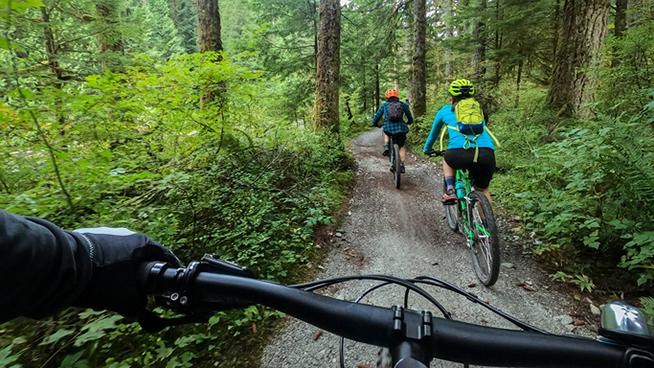Last Updated on: 18th December 2024, 12:30 pm
Mountain biking combines adventure and fitness, offering a cardiovascular workout while exploring nature. Originating in the 1970s in California, it has grown with technological advancements, appealing to those interested in both health and adventure.
Mountain biking is a community-driven sport that emphasizes physical fitness and the thrill of exploring rugged terrains. It caters to both seasoned riders and newcomers, encouraging exploration of personal limits and the outdoors.
The Cardiovascular Benefits of Mountain Biking

Mountain biking is an effective cardiovascular exercise, increasing heart rate and improving circulation. The varied terrain requires different effort levels, enhancing heart efficiency compared to stationary biking or running. The natural environment adds variety, making it a superior cardio workout.
- Health improvements are often reported by riders, including lowered blood pressure and reduced stress.
- Riders benefit from both physical and mental health improvements, enjoying the scenic beauty and solitude of nature.
Mountain biking offers a combination of excitement and fitness, making it an excellent choice for improving heart health and enjoying an adventurous way to stay fit.
Mountain Biking: The Adventure Aspect

Mountain biking offers exploration and excitement, with new trails and landscapes providing unique challenges. The thrill of downhill rides and technical challenges enhances both physical and mental agility, offering a sense of achievement and confidence.
- Outdoor adventure promotes mindfulness and reduces stress.
- Physical exertion combined with natural beauty clears the mind and promotes well-being.
Mountain biking fosters community through shared experiences, creating bonds and friendships. Group rides and events enhance the social aspect, encouraging motivation and support among riders.
Gearing Up for Mountain Biking

Proper gear is essential for mountain biking. Key equipment includes a helmet, gloves, and protective eyewear. A high-quality mountain bike suited to your needs is crucial, with factors like suspension, frame material, and wheel size affecting performance. Comfort and fit are vital for long rides, ensuring efficient energy transfer and minimizing fatigue.
- Choosing the right bike depends on the terrain you’ll explore.
- Proper fit enhances performance and endurance.
- Safety gear is essential for protection.
Gearing up involves balancing safety, comfort, and performance, setting the stage for a rewarding adventure on the trails.
Skills and Techniques for Effective Mountain Biking

Basic Skills Every Mountain Biker Should Master
Key skills include balance, control, weight shifting, and efficient pedaling. Braking techniques are crucial for safety.
Advanced Techniques for Tackling Challenging Terrains
Advanced skills include the bunny hop, technical climbing, mastering descents, and cornering. These enhance riding efficiency and safety.
Tips for Endurance Building and Efficient Riding
Endurance is built through interval training and consistent riding. Nutrition and hydration are vital for performance. Efficient riding techniques conserve energy for longer rides.
Focusing on skills, endurance, and technique enhances the mountain biking experience, whether you’re a beginner or experienced rider.
Finding Your Trail: How to Get Started with Mountain Biking

Start by finding trails that match your skill level. Local bike shops provide trail maps and tips. Online resources like MTB Project and Trailforks offer listings with reviews and difficulty ratings.
- Joining local biking groups offers camaraderie and organized rides.
- Clubs provide knowledge of local trails and ensure safe riding.
Technology connects riders through apps like Strava, which track rides and suggest routes. Online forums and social media groups facilitate sharing experiences and arranging meet-ups.
Engage with these resources to find trails that suit your preferences, whether for a leisurely ride or a challenging climb.
Overcoming Challenges and Staying Motivated

Beginners face challenges like mastering skills and overcoming fear. Start with small steps, practice basic skills, and gradually tackle more difficult trails.
- Set goals to give direction and purpose.
- Celebrate small victories to fuel motivation.
Events and competitions provide milestones and community connections. Participating inspires and motivates riders to set new goals.
Mountain biking is a journey of growth and adventure. Embrace challenges, celebrate progress, and let the thrill of the ride fuel your passion.
Conclusion
Mountain biking offers a unique path to wellness, combining physical challenge and natural beauty. It encourages exploration, skill mastery, and community connection. Embrace each ride as an opportunity to explore, grow, and thrive.

